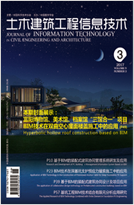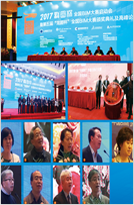2010, 2(2): 51-56, 62.
城市轨道交通枢纽行人仿真系统开发
中国建筑科学研究院软件所,北京 100013 |
A Simulation System of Pedestrian in MTR hub Development
Software Institute of Building Engineering, China Academy of Building Research, Beijing 100013, China |
引用本文:
赵伟, 蔡鹏. 城市轨道交通枢纽行人仿真系统开发[J]. 土木建筑工程信息技术,
2010, 2(2): 51-56, 62.

Citation:
Zhao Wei, Cai Peng. A Simulation System of Pedestrian in MTR hub Development[J]. Journal of Information Technologyin Civil Engineering and Architecture,
2010, 2(2): 51-56, 62.

摘要:本文介绍了自主研发的城市轨道交通枢纽仿真原型系统的算法和主要功能。利用仿真系统对复兴门枢纽进行了仿真,通过对比仿真结果与实际调查数据,对仿真系统的实用性和准确性进行了验证。同时,分析研究了仿真过程中的主要误差来源。
Abstract: This paper introduces the algorithm and main function of the self-researched prototype simulation system of pedestrian in MTR hub. Then Fuxingmen hub based on such simulation system is simulated. By comparing the simulation results and the practical survey data, the practicality and accuracy of such simulation system is verified. Finally, the main error sources in the simulations are studied.
| [1] |
Williams A. Go with the Flow[J]. The Architects Journal, 2004, 219(6):42-46 |
| [2] |
ANSYS STEPS. STEPS User Manual[Z]. America: ANSYS, 2007 |
| [3] |
Serge P and Hoogendoorn. Microscopic Simulation of Pedestrian Flows[CD]. America:Transportation Research Board, 2003 |
| [4] |
方伟峰, 杨立中, 黄锐.基于元胞自动机的多自主体人员行为模型及其在性能化设计中的应用[J].中国工程科学, 2003, 5(3):67-71 |
| [5] | |
| [6] |
李得伟. 城市轨道交通枢纽乘客集散模型及微观仿真理论[D]. 北京: 北京交通大学博士学位论文, 2007 |
| [7] |
Gipps P.G and Marksjo B. A Micro-Simulation Model for Pedestrian Flows [J]. Mathematics and Computers in Simulation, 1985, 27(2):95-105 |
| [8] |
Okazaki S. A Study of Pedestrian Movement in Architectural Space Part 2: Concentrated Pedestrian Movement [J]. Trans. of A.I.J., 1979, 284:101-110 |
| [9] |
Okazaki S. A Study of Pedestrian Movement in Architectural Space Part 3: Along the Shortest Path, Taking Fire, Congestion and Unrecognized Space into Account [J]. Journal of Architecture, Planning. Environment Engineering. AIJ, 1979, 285:137-147 |
| [10] |
Watts J.M. Computer Models for Evacuation Analysis [J]. Fire Safety Journal, 1987, 12:237-245doi: 10.1016/0379-7112(87)90008-7 |
| [11] |
Helbing D and Molnar P. Social Force Model for pedestrian dynamics [J]. Physical Review E, 1995, 51:4282-4286doi: 10.1103/PhysRevE.51.4282 |
| [12] |
Helbing D. A mathematical model for the behavior of pedestrians [J]. Behavioral Science, 1991, 36:298-310doi: 10.1002/(ISSN)1099-1743 |
| [13] |
Blue V. J and Adler J.L. Cellular Automata Microsimulation of Bidirectional Pedestrian Flows [J]. Transportation Research Record, 2000, 1678:135-141 |
| [14] |
Blue V. J and Adler J.L. Cellular automata microsimulation for modeling bidirectional pedestrian walkways [J]. Transportation Research B-METH, 2001, 35(3):293-312doi: 10.1016/S0191-2615(99)00052-1 |
| [15] | |
| [16] |
赵伟, 蔡鹏, 金新阳, 唐意. 城市轨道交通枢纽行人仿真研究[A]. 第五届智能交通年会暨第六届国际节能与新能源汽车创新发展论坛论文集[C]. 深圳, 2009 |
计量
- PDF下载量(12)
- 文章访问量(1122)
- HTML全文浏览量(1165)















